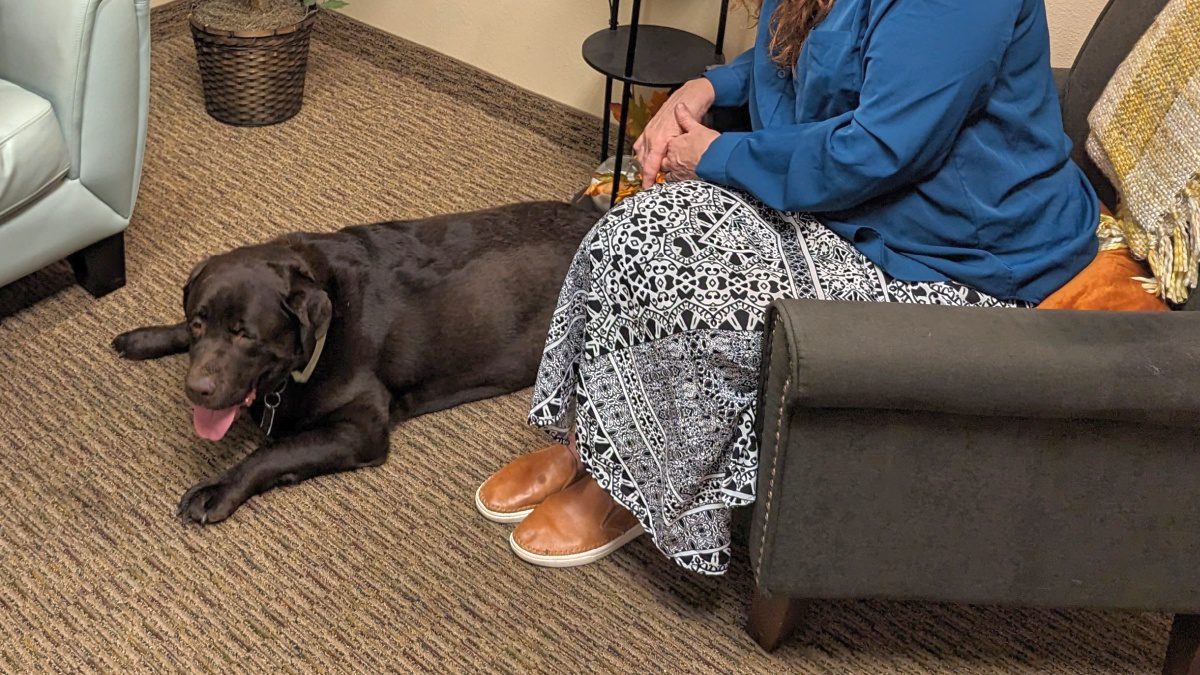Resources
Cuffing Season
Don’t Ignore the Red Flags During the holidays people tend to rush into relationships and/or ignore red flags. Most people want to be in a relationship even if it is temporary. Usually one or both parties force a relationship even though they lack commonality to prevent being single for the holidays. People tend to give
+ Read More
+ Read More
What a Horse Whisperer Taught Me About Therapy
Years ago, I watched a documentary about a man who worked with horses in a way I’d never seen before. He wasn’t aggressive. He didn’t break them. He didn’t use force or fear. When a horse refused to budge, he didn’t fight it. Instead he patiently stood nearby—steady, calm, and grounded, inviting the horse to
+ Read More
+ Read More
What Is Animal-Assisted Therapy?
And How a Calm Dog Can Help You Feel More Human Again If you’ve ever felt the quiet comfort of a dog resting their head on your knee, you already understand something important: sometimes healing doesn’t start with words—it starts with safety. Animal-Assisted Therapy (AAT) is a therapeutic approach that integrates the natural calming presence
+ Read More
+ Read More
From Surviving to Thriving: Choosing Self-Trust Over Self-Reliance
By AZCC
Growing up, I learned that being independent was something to be proud of. While self-reliance can be a strength, it can also become a trap when it’s the only tool we use. Asking for help feels uncomfortable and often leads to a tug-of-war between the part of me that wants to power through on my own, and the part that longs to reach out but hesitates.
That’s where self-trust makes the difference. Instead of proving we can carry it all, self-trust helps us know when to rest, when to ask for support, and when to let ourselves soften.
Unmasking: How to Uncover the Truth Beneath Our Emotional Armor
By AZCC
Halloween isn’t the only time we wear masks. Many of us walk through life hiding exhaustion behind a smile or pain behind productivity. This month, we’re reflecting on the ways emotional armor protects us—and how therapy can help us finally take it off.
Beyond Cancer Survival: How To Find Yourself Again
By AZCC
The Parts We Don’t Talk About In honor of Breast Cancer Awareness Month, I want to share what I’ve learned from living through cancer myself and as a therapist sitting with others on their healing journey. Medical treatment focuses on survival—but real healing takes much more. When treatment ends, it can feel like the world
+ Read More
+ Read More
Therapy in Arizona: What It Really Looks Like and How to Find the Best Fit for You
By AZCC
Wondering what therapy really looks like? Learn how to find the right therapist in Arizona and what to expect from your sessions.
The Hidden Pain of Men: How to Rebuild Connection
By AZCC
Many men feel a quiet ache of loneliness and lost brotherhood. Discover how to rebuild meaningful friendships, reconnect with other men, and restore emotional connection in your life.
Finding Comfort Without Shame: Understanding Holiday Emotional Eating
By AZCC
Emotional Eating During the Holidays Holiday expectations have a way of bringing things to the surface—mixed in with the joy and nostalgia can be unhealthy servings of overwhelm, exhaustion, and even pain.For many, those emotions find their way to the table. If you’ve ever reached for a cookie after a hard conversation, grazed your way
+ Read More
+ Read More
Navigating Faith in Therapy: How to Heal From Where You Are
By AZCC
Understanding Faith in Therapy: Finding Your Personal Path Faith can be a source of peace.But it can also be a source of pain.And for many, it’s both—something beautiful, complicated, and deeply personal.In therapy, there’s no single story about faith. Only your story.Our goal is to meet you wherever you are in your faith and healing
+ Read More
+ Read More
Social Anxiety and PTSD During Inevitable Uncertainty
How Social Anxiety and PTSD Interact Social anxiety is also known as social phobia and can come hand in hand with Post Traumatic Stress Disorder (PTSD). The symptoms include avoidance, lightheaded, sweating excessively, nausea, fast heart rate and can disrupt everyday life such as school, work, and relationships. The causes may vary for both disorders,
+ Read More
+ Read More
Navigating the Social Landscape With ASD
By Maria Blahut
The Puzzle of Social Interactions Navigating the intricate social landscape can be a complex task, especially for children and teenagers with Autism Spectrum Disorder (ASD). Understanding and interpreting social cues can pose significant challenges for children and teens, impacting their social interactions and relationships. One primary difficulty individuals with ASD encounter involves grasping non-verbal cues,
+ Read More
+ Read More












